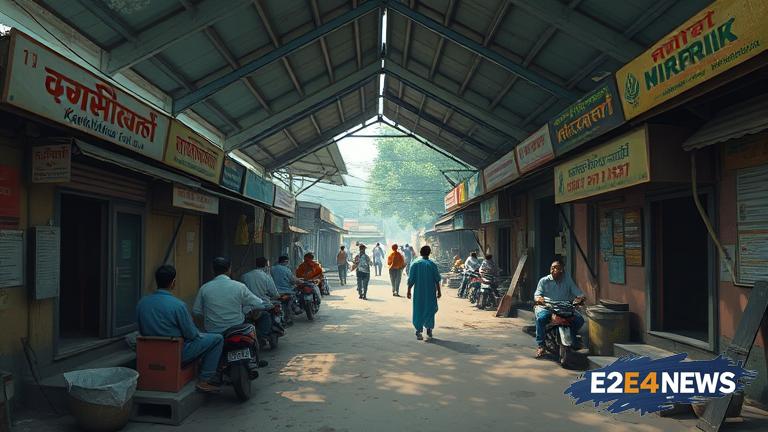The Kabutarkhana, a popular spot in Mumbai, has been making headlines lately due to the health risks it poses to the public. The area, known for its large population of pigeons, has been criticized for its unsanitary conditions and potential to spread diseases. According to reports, the Kabutarkhana is home to over 10,000 pigeons, which has led to a significant amount of bird droppings and feathers in the area. This has created an environment conducive to the spread of diseases such as histoplasmosis, a respiratory infection caused by the fungus Histoplasma capsulatum. The fungus is found in bird droppings and can become airborne, posing a significant health risk to those in the surrounding area. The situation has become so dire that local residents and politicians have begun to speak out against the Kabutarkhana, citing the health risks it poses. Devendra Fadnavis, a prominent politician in Mumbai, has been vocal about the need to address the issue, stating that the Kabutarkhana has become a ‘health hazard’ for the city. Fadnavis has called for the implementation of measures to control the pigeon population and improve the sanitation in the area. However, the issue is not just about health risks, as it has also become a political hot potato. The ruling party in Mumbai has been accused of not doing enough to address the issue, with opposition parties seizing on the opportunity to criticize the government. The Kabutarkhana has also become a symbol of the city’s larger problems with sanitation and public health. Despite the city’s reputation as a hub of commerce and industry, Mumbai’s public health infrastructure has been criticized for being inadequate. The Kabutarkhana is just one example of the many public health challenges facing the city, from inadequate waste management to a lack of access to clean water and sanitation. The situation has sparked a wider debate about the need for improved public health infrastructure in Mumbai, with many calling for increased investment in sanitation and healthcare. The city’s residents are also taking matters into their own hands, with many organizing clean-up initiatives and awareness campaigns to highlight the issue. However, the problem is complex and will require a multi-faceted approach to solve. The government will need to work with local residents, businesses, and other stakeholders to develop a comprehensive plan to address the health risks posed by the Kabutarkhana. This will require a significant investment of resources, including funding for sanitation and public health initiatives. The international community is also watching the situation closely, with many experts weighing in on the need for improved public health infrastructure in Mumbai. The city’s reputation as a hub of commerce and industry is at risk of being tarnished by its poor public health record. As the situation continues to unfold, it remains to be seen how the government and other stakeholders will respond to the challenge. One thing is certain, however: the Kabutarkhana has become a symbol of the need for improved public health infrastructure in Mumbai, and it will take a concerted effort to address the issue. The city’s residents are hoping that the government will take decisive action to address the health risks posed by the Kabutarkhana, and that the area can be transformed into a safe and healthy space for everyone. The Kabutarkhana is not just a local issue, but a reflection of the city’s broader challenges with public health and sanitation. As such, it will require a comprehensive and sustained effort to address the root causes of the problem. The government, local residents, and other stakeholders must work together to develop a plan that prioritizes public health and sanitation, and that provides a safe and healthy environment for all. The situation is a wake-up call for the city, and it remains to be seen how the government and other stakeholders will respond to the challenge. The Kabutarkhana has become a test case for the city’s ability to address public health challenges, and it will be closely watched by the international community. The city’s reputation is at stake, and it will take a concerted effort to restore it. The health risks posed by the Kabutarkhana are just the tip of the iceberg, and the city must take a comprehensive approach to addressing the issue. This will require significant investment in public health infrastructure, as well as a sustained effort to raise awareness and promote behavioral change. The city’s residents are counting on the government to take decisive action, and to prioritize public health and sanitation. The Kabutarkhana is a symbol of the city’s larger challenges, and it will take a concerted effort to address the issue. The government, local residents, and other stakeholders must work together to develop a plan that prioritizes public health and sanitation, and that provides a safe and healthy environment for all.





